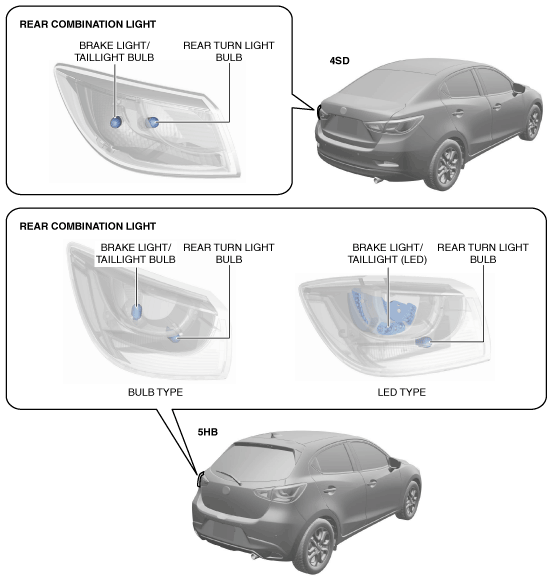 |
am2zzn00004597
REAR COMBINATION LIGHT
id091800011800
Purpose
Function
|
Operation switch |
Related light |
Operation status |
|---|---|---|
|
Light switch (TNS (parking lights))
|
Taillight
|
On
|
|
Brake switch
|
Brake light
|
On
|
|
Turn switch
|
Rear turn light
|
Flash
|
|
Hazard warning switch
|
Construction
am2zzn00004597
|
Operation
Taillight
am2zzn00004598
|
Brake light
am2zzn00001734
|
am2zzn00001735
|
am2zzn00001736
|
Rear turn light
am2zzn00003870
|
am2zzn00001738
|
Fail-safe